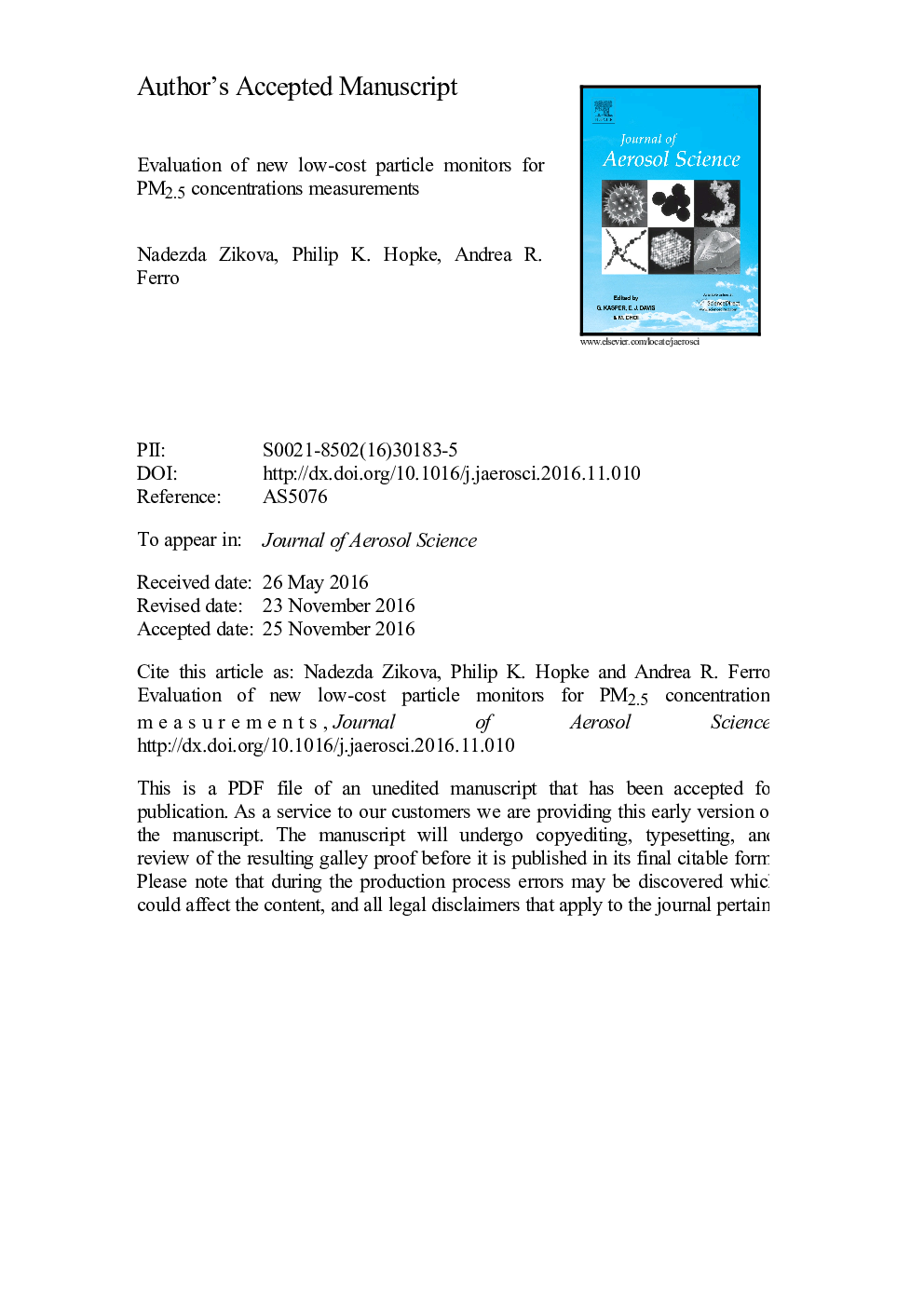| کد مقاله | کد نشریه | سال انتشار | مقاله انگلیسی | نسخه تمام متن |
|---|---|---|---|---|
| 5753955 | 1620718 | 2017 | 24 صفحه PDF | دانلود رایگان |
عنوان انگلیسی مقاله ISI
Evaluation of new low-cost particle monitors for PM2.5 concentrations measurements
دانلود مقاله + سفارش ترجمه
دانلود مقاله ISI انگلیسی
رایگان برای ایرانیان
کلمات کلیدی
موضوعات مرتبط
مهندسی و علوم پایه
علوم زمین و سیارات
علم هواشناسی
پیش نمایش صفحه اول مقاله

چکیده انگلیسی
Sixty-six, new, low-cost Speck monitors were collocated with a Grimm 1.109 particle spectrometer and CO loggers during one indoor and two outdoor monitoring campaigns to assess the ability of the monitors to measure the PM concentrations under real use conditions. The limit of detection of the monitors was calculated, and the monitors' bias and precision, as well as the results' reproducibility, were determined. Correlation coefficients of 0.3 and 0.2 observed between the Speck units and the Grimm instrument during indoor and outdoor measurements were increased by separating the data into sets affected by different sources. When the ambient data were divided into combustion and non-combustion aerosol, the mean r2 increased to 0.5 and 0.4 for indoor and outdoor combustion periods data, respectively. Also, averaging the data to improve the signal to noise ratio increases the correlation for low PM concentrations. For outdoor data, the correlation increased to 0.5 when the data were averaged to hourly averages. Between the Specks, the correlation was >0.9 indoors, showing a high degree of reproducibility among the results. The limit of detection was calculated using the method of Wallace et al. (2011) and was found to be 10 µg mâ3 at a 99% confidence level for 1-minute data. The mean bias values showed a PM overestimation of 200% for indoor data, and 500% for outdoor data relative to the Grimm values. However, these values are influenced by the low measured PM concentrations. The RMSE of Specks was about 10 µg mâ3 and the concentrations were often about this value. The overall precision was 8.8±1.7% indoors and 12.2±6.2% outdoors, suggesting its independence from changing ambient conditions. The Speck monitors may be suitable for use in indoor and outdoor PM monitoring programs, depending on the required performance to meet the goals of the study. The instrument has a large bias at low concentrations, making it unsuitable for background measurements or for measurements in clean environments. Even at concentrations over the LOD, it is necessary to assess the bias for expected particle sources before any instrument deployment.
ناشر
Database: Elsevier - ScienceDirect (ساینس دایرکت)
Journal: Journal of Aerosol Science - Volume 105, March 2017, Pages 24-34
Journal: Journal of Aerosol Science - Volume 105, March 2017, Pages 24-34
نویسندگان
Nadezda Zikova, Philip K. Hopke, Andrea R. Ferro,